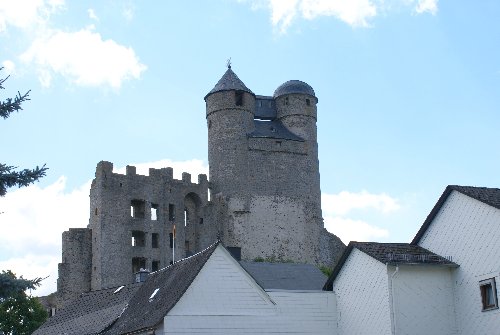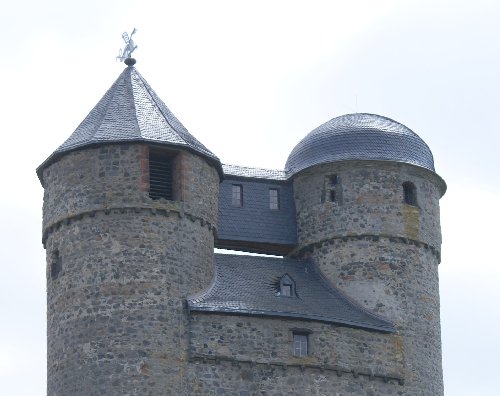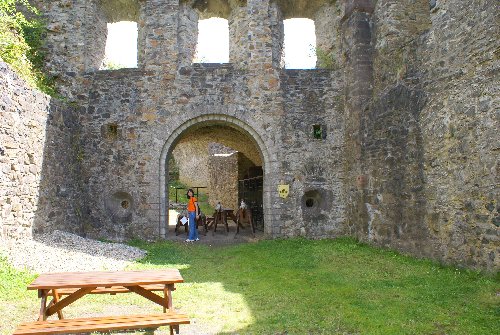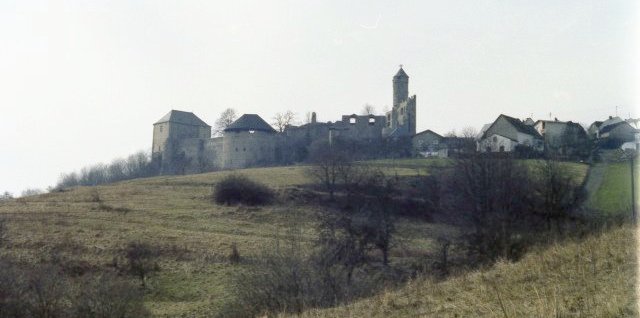Greifenstein
Greifenstein, left in 2008 when approaching from the plateau, looking southeast.
Below, Greifenstein in 1979, when approaching through a valley up a secondary road going northwest.



 | ||||||




The keep of Greifenstein, above and left in 2008. Below in 1979. The keep is of a twin-tower design, but with only one stairway. At each level there is a floor for storage and fighting, and at the top there is a narrow walkway from the stairs (round roof) to bellfrey.


Greifenstein was first mentioned in documents in 1226, but it took only 70 years for the owners of the castle to run afoul of Adolf the King of Nassau and his allies. In 1298, they besieged and destroyed the castle. By the mid-1300s the castle was rebuilt under the auspices of the House of Nassau derived through imperial edict. At one point the Solms-Braufels family owned the property and from the mid to late 1400s the castle was extensively expanded. The castle survived the Thirty Years War, while also became the scene of local witchcraft trials in the 1640s. By the mid-1600s the Solms-Braufels family died out and the property went to the Moritz family, who had now moved to Braunfels castle. Abandoned, Greifenstein began to crumble, a state that remained until the 1960s. Efforts began in the late 1960s to restore the castle and add museum artifacts, including a massive collection of antique bells.
Views of walls as one moves into the inner ward. The photo at right was taken in 1978. Those below in 2008. The view of the gate entrance from 1978 is the same as the bottom photo except from an opposite direction.